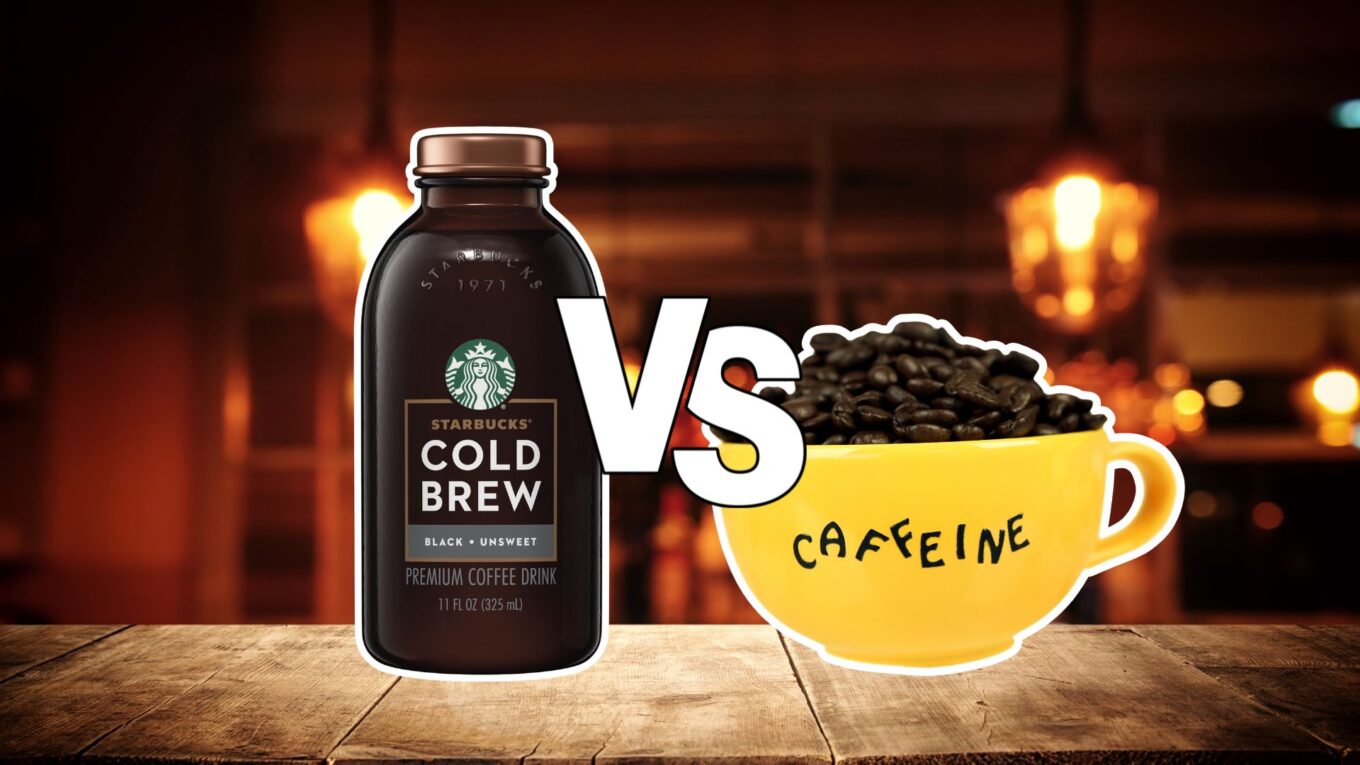Coffee lovers often wonder about the caffeine kick in their favorite drinks.
If you’re a fan of cold brew, you might be curious about how Starbucks compares to other coffee chains.
This article will explore the world of cold brew caffeine, focusing on Starbucks and its competitors.
We’ll examine lab test results, compare caffeine levels, and explore factors that affect your coffee’s punch.
You’ll learn about Starbucks’ consistency across stores and how it measures up to other popular brands.
We’ll also touch on health aspects and customization options for those who want to tweak their caffeine intake.
Whether you’re seeking a strong pick-me-up or trying to manage your caffeine consumption, this guide will help you make informed choices about your cold brew.
Let’s get started!
Everything About Starbucks Cold Brew

What is Cold Brew?
Cold brew coffee has taken the coffee world by storm, offering a unique and refreshing way to enjoy your daily caffeine fix.
Unlike traditional hot-brewed coffee, cold brew is made by steeping coarsely ground coffee beans in cold water for an extended period, typically 12 to 24 hours.
This slow extraction process results in a smooth, less acidic coffee concentrate that can be served cold, over ice, or diluted with water or milk to suit individual preferences.
Key Characteristics
Cold brew coffee is known for its distinct characteristics that set it apart from regular iced coffee.
- One of the most notable features is its smoother flavor profile, attributed to the lower acidity levels achieved through the cold brewing process.
- The absence of heat during the extraction process reduces the amount of acidic compounds released from the coffee beans, resulting in a more mellow and less bitter taste.
This makes cold brew an appealing option for those sensitive to the acidity in regular coffee or who prefer a smoother, gentler flavor.
Differences Between Cold Brew and Regular Iced Coffee
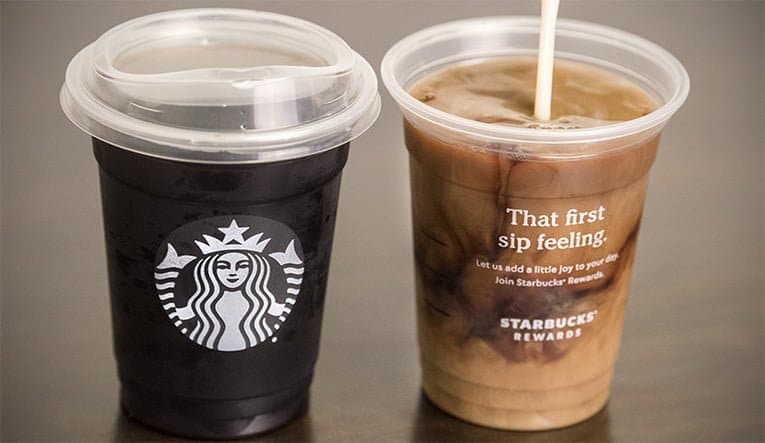
1. Brewing Method
While cold brew and regular iced coffee may seem similar at first glance, they differ significantly in their preparation methods.
Cold brew steers coarsely ground coffee beans in cold water for 12-24 hours, allowing the flavors to be extracted slowly without heat.
In contrast, iced coffee is typically brewed using hot water, just like regular coffee, and then cooled down by pouring it over ice or refrigerating it.
2. Flavor and Acidity
The difference in brewing methods directly impacts the flavor and acidity of the final product.
Cold brew coffee is known for its smooth, rich, and less acidic taste, as the cold water extraction process minimizes the release of acidic compounds from the coffee beans.
On the other hand, iced coffee tends to have a more acidic and sharper taste profile, as the hot brewing process extracts more of the coffee’s natural acids.
3. Caffeine Content
Another notable difference between cold brews and iced coffee is their caffeine content.
Due to the prolonged brewing process, cold brew typically has a higher caffeine concentration than regular iced coffee.
The extended steeping time allows for a greater extraction of caffeine from the coffee beans.
However, it’s important to note that the caffeine content can vary depending on factors such as the coffee-to-water ratio and the specific beans used.
4. Serving Style
When it comes to serving, cold brew is often enjoyed straight or with minimal dilution, as the concentrate is smooth and flavorful.
Depending on their preferences, some people may add a splash of water or milk to their cold brew.
On the other hand, Iced coffee is frequently diluted by the melting ice, which can affect the overall strength and flavor of the beverage.
To compensate for this, some coffee shops may brew their iced coffee at a higher strength or offer the option to add extra shots of espresso.
Starbucks’ Introduction of Cold Brew
1. Market Entry
- 2014 Starbucks made a significant move by introducing cold brew coffee in select markets.
- This strategic decision addressed the growing demand for high-quality, less acidic cold coffee options.
- Starbucks recognized the potential of cold brew and seized the opportunity to lead this emerging trend.
- The introduction of Starbucks Cold Brew quickly gained popularity among coffee enthusiasts who appreciated its smoother taste and higher caffeine content than regular iced coffee.
2. Product Development
- Starbucks has developed a meticulous process for crafting its cold brew to ensure consistency and quality.
- Small batches of cold brew are steeped for 20 hours daily, allowing the flavors to develop and reach their optimal balance.
- Starbucks offers its cold brew in various sizes, including Tall, Grande, Venti, and Trenta, catering to different customer preferences.
- Additionally, they provide customizable options, allowing customers to personalize their cold brew experience by adding syrups, milk, or other flavors.
3. Impact on the Market
- Starbucks’ introduction of cold brew in 2014 significantly impacted the coffee market.
- It sparked a surge of interest and competition in the cold coffee category, with other coffee chains and independent cafes following suit and offering their own cold brew versions.
- Starbucks’ move met the growing demand for a smoother, less acidic cold coffee option and set a new standard for quality and taste.
The popularity of Starbucks Cold Brew has contributed to the overall growth and mainstream acceptance of cold brew coffee, making it a staple beverage choice for coffee lovers worldwide.
4. Variations of Starbucks Cold Brew
Different syrups and milk options can be great for those who want to modify the flavor profile without significantly altering caffeine levels.
Starbucks also offers various cold brew variations, such as
- Pistachio Cream Cold Brew
- Salted Caramel Cream Cold Brew
Caffeine Content in Starbucks Cold Brew
Starbucks offers its signature Cold Brew coffee in various sizes to cater to different preferences and caffeine needs.
- The Tall (12 fl oz): 155 mg of caffeine
- The Grande (16 fl oz): 205 mg of caffeine
- The Venti (24 fl oz): 310 mg of caffeine
- The Trenta (31 fl oz): 360 mg of caffeine
1. Comparison with Other Starbucks Coffee Drinks
Compared to Starbucks’ regular iced coffee, cold brew stands out regarding caffeine content.
- For instance, a Grande Iced Coffee contains 165 mg of caffeine, while a Grande Cold Brew packs a more potent 205 mg.
- This difference can be attributed to the prolonged steeping process used in cold brew, which allows for greater caffeine extraction from the coffee beans.
It’s important to note that while the caffeine content is higher in cold brew, the difference may vary slightly due to factors such as the specific blend of coffee beans used and potential variations in preparation.
2. Customize for Increased Caffeine
For those who crave an extra caffeine jolt, Starbucks offers the option to add espresso shots to their cold brew.
- Each shot of espresso contributes an additional 150 mg of caffeine to the beverage.
- This customization allows customers to tailor their cold brew experience to their desired caffeine level.
- For example, a Grande Cold Brew with one espresso shot would contain 355 mg of caffeine, combining the inherent caffeine from the cold brew with the added boost from the espresso shot.
Individuals must be mindful of their caffeine intake and make informed choices based on their personal tolerance and health considerations.
Starbucks Cold Brew: Comparison with Competitors
When comparing Starbucks Cold Brew to other popular cold brew offerings, it’s evident that caffeine content varies significantly among brands.
1. Death Wish Coffee Co. Unsweetened Cold Brew

It stands out with an impressive 300 mg of caffeine in just an 8 oz serving, catering to those who seek an extreme caffeine kick.
2. High Brew Nitro Black Cold Brew
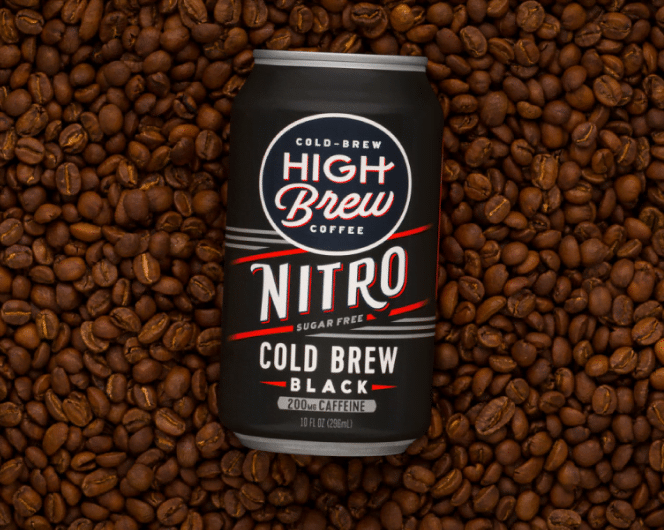
Known for its smooth taste due to nitrogen infusion, it offers 200 mg of caffeine in a 10 oz serving, closely matching Starbucks’ Grande size.
3. La Colombe Triple Shot Draft Latte
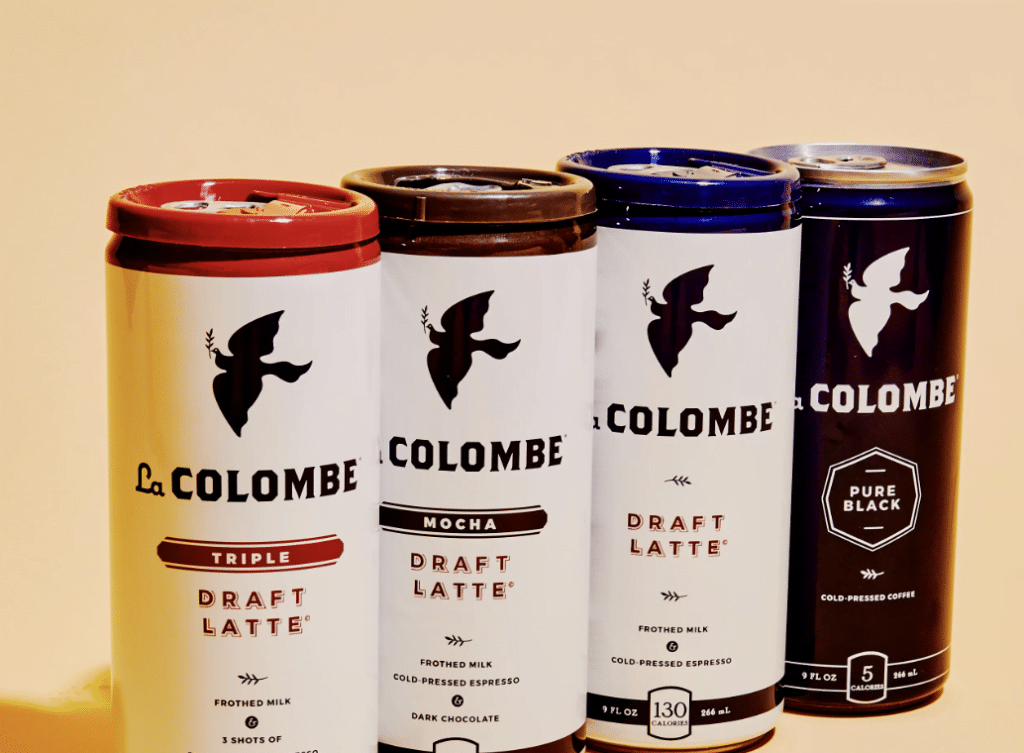
Thanks to its triple espresso shots, it packs 175 mg of caffeine into a 9 oz serving.
4. Chameleon Organic Cold-Brew Original Oat Milk Latte
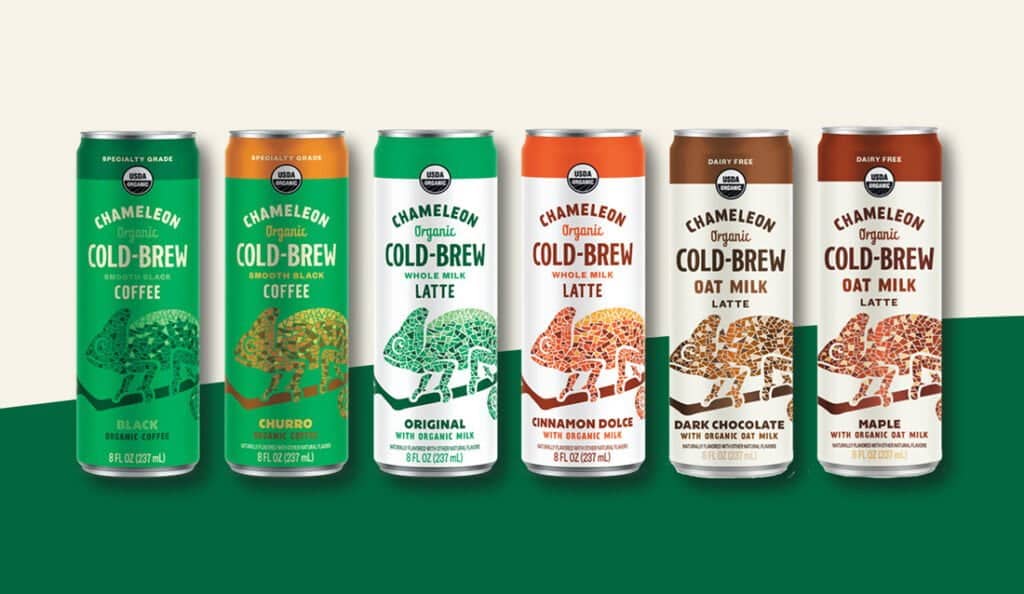
It provides 100 mg of caffeine in a 12 oz serving for those who prefer a creamier and organic option.
Comparison with Other Popular Chains
1. 7-Eleven

The lab tests revealed that 7-Eleven had the highest average caffeine content among the chains tested, with an impressive 280 mg per cup.
However, 7-Eleven also showed significant variability in its caffeine levels across different stores.
The highest recorded measurement reached a staggering 22 mg per ounce, while the lowest dipped to 19 mg per ounce, indicating a lack of consistency in their brewing processes.
2. McDonald’s McCafe

McDonald’s McCafe performed relatively well in the lab tests, with an average caffeine content of 227 mg per cup.
While this is lower than 7-Eleven’s average, McDonald’s demonstrated better consistency across its stores.
The range of caffeine levels was narrower, with most samples falling between 10 to 17 mg per ounce.
However, a few outliers deviated from the average, suggesting room for improvement in their consistency.
3. Dunkin’ Donuts
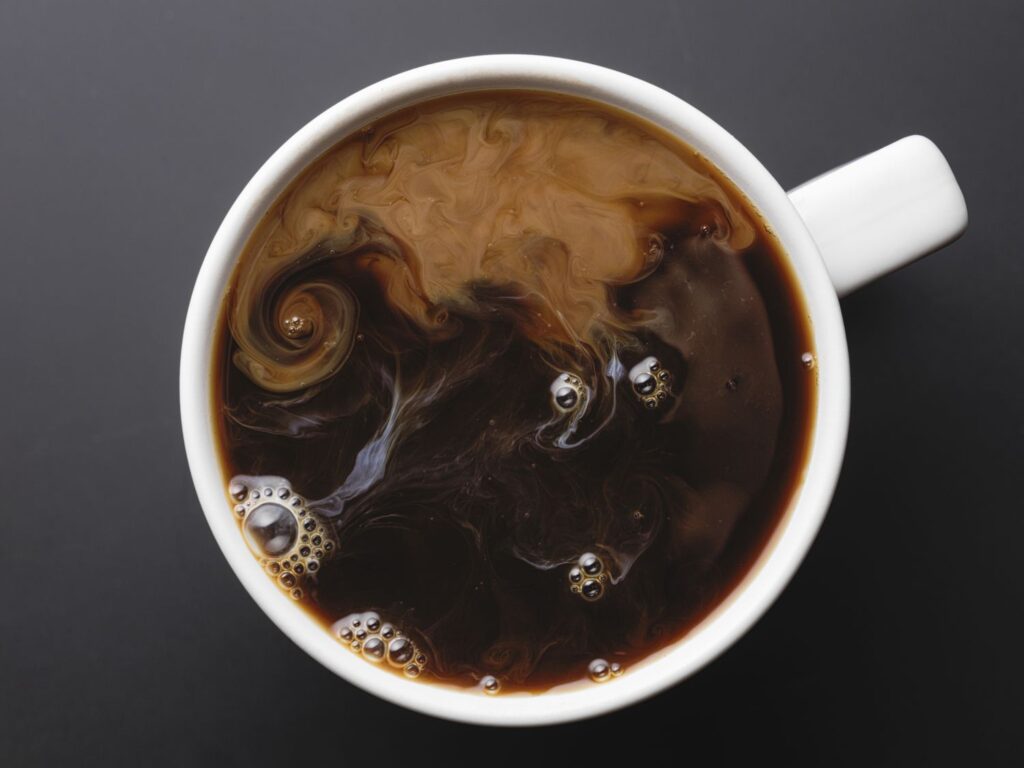
Dunkin’ Donuts had the lowest average caffeine content among the chains tested, with an average of 220 mg per cup.
The lab tests also revealed a wider range of caffeine levels across different Dunkin’ Donuts locations.
Some stores recorded caffeine levels as low as 16 mg per ounce, while others reached up to 20 mg per ounce.
This variability suggests that Dunkin’ Donuts’ brewing processes may not be as standardized as Starbucks’.
Conclusion
Understanding Starbucks Cold Brew’s caffeine content and its comparison to other coffee chains is crucial for making informed choices.
Factors like brewing methods, bean types, and customization options can greatly influence the caffeine levels in your cup.
While Starbucks Cold Brew generally contains more caffeine than regular iced coffee, it’s important to be mindful of the potential health implications of high caffeine intake.
By personalizing your order and practicing moderation, you can enjoy the benefits of cold brew while minimizing any negative effects.
So, the next time you’re craving a refreshing and energizing pick-me-up, consider exploring the world of cold-brew coffee and discovering how Starbucks compares to the competition.
Remember, the key to a satisfying coffee experience is finding the perfect balance that works for you.
Frequently Asked Questions
How Much Caffeine Is in a Starbucks Grande Cold Brew Compared to Other Coffee Chains?
A Starbucks Grande Cold Brew has 205 mg of caffeine, which is less than Dunkin’ Donuts (297 mg) but more than Peet’s Coffee (150 mg) and McDonald’s McCafe (200 mg).
What Factors Influence the Caffeine Content in Cold Brew Coffee?
Factors influencing caffeine content in cold brew include the coffee-to-water ratio, brewing time, water temperature, grind size, and the coffee bean type and origin.
How Does the Caffeine Content of Starbucks Cold Brew Compare to Regular Iced Coffee?
Starbucks Cold Brew contains more caffeine than regular iced coffee. A Grande Cold Brew has 205 mg of caffeine, while a Grande Iced Coffee has 165 mg.
What Are the Health Implications of Eating High-Caffeine Beverages Like Cold-Brew Coffee?
Consuming high-caffeine beverages like cold brew can lead to insomnia, anxiety, digestive issues, increased heart rate, and dependency. Moderation is key to avoiding negative health effects.
Can You Customize Starbucks Cold Brew to Increase or Decrease Its Caffeine Content?
You can customize Starbucks Cold Brew by choosing different sizes (Tall, Grande, Venti, Trenta) or adding espresso shots to increase caffeine. Decaf cold brew decreases caffeine content significantly.

